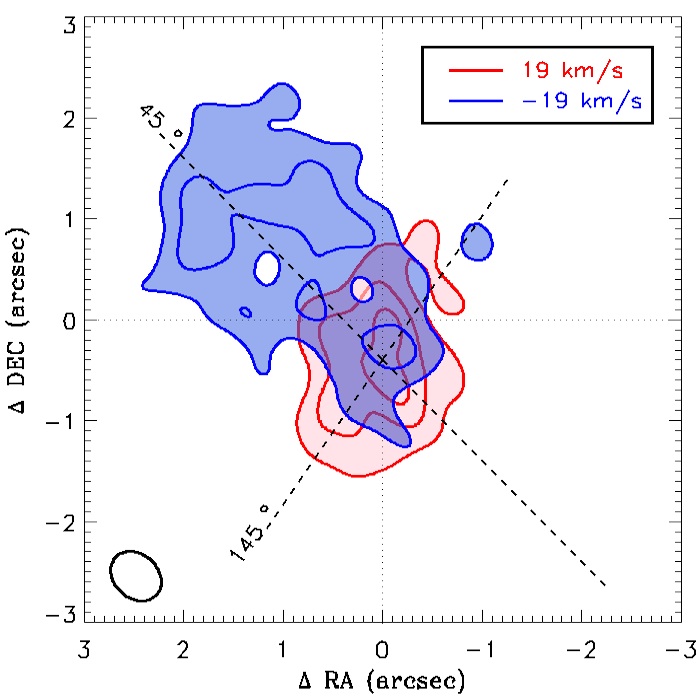|
Home \ Science \ Scientific Highlights
Scientific Highlights with the SMAA Spiral and Bipolar Outflow in CIT 6: Unwinding the Mysteries of a Carbon StarProtoplanetary nebulae (pPNe) often consist of outer rings (or arcs) and inner bipolar (or multipolar) structures. The coexistence of such geometrically distinct structures is commonly interpreted as the evidence of the shape transition from spherically-symmetric circumstellar envelopes of asymptotic giant branch (AGB) stars to highly-asymmetric PNe. We have used the SubMillimeter Array (SMA) to obtain a high-resolution CO map of CIT 6. It presents both outer spiral-shell pattern and inner nascent bipolar (or possibly multipolar) structure, suggesting that CIT 6 is at the transition from the AGB to post-AGB in particular in a binary system. The dynamical timescale of the spiral-shell pattern of 150-300 years corresponds to the orbital period of a binary system, while the bipolar (or multipolar) structure is an expected outcome of binary interaction. Further details of the observed features (double spiral and one-sided gap) are suggested as the evidence of a highly eccentric orbit (Kim et al. 2015, ApJ, 814, 61).
|
>> INTERNAL DOCU | ASIAA



 Figure 1.
Figure 1.  Figure 2.
Figure 2. 